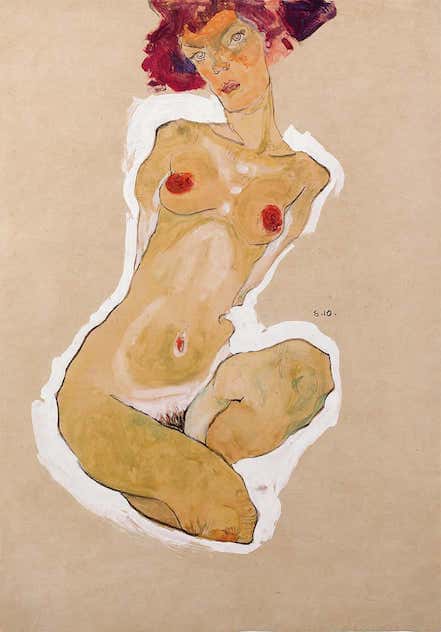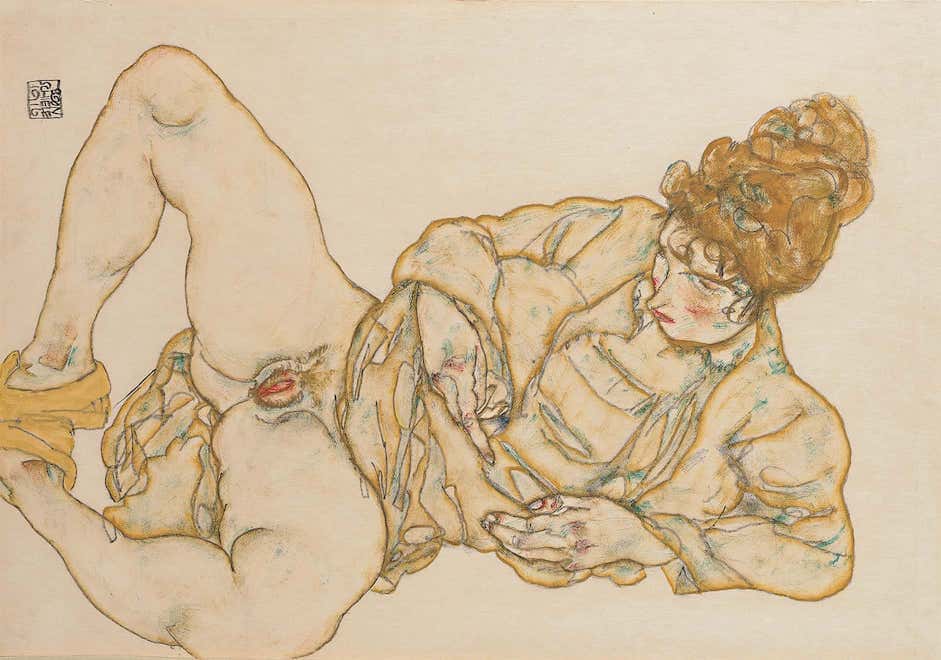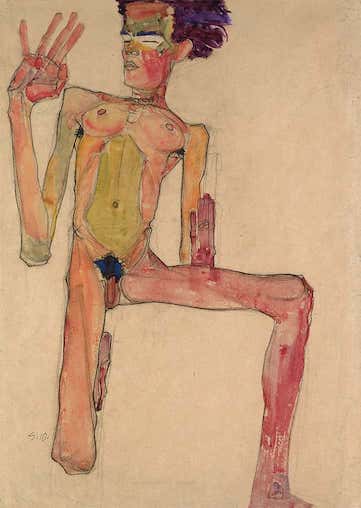Text: Bernadette Reinhold
Egon Schiele -
Body images mirrored
in the "irrecoverable I"
Art expert
The expressionist Egon Schiele (1890-1918) is one of the most important representatives of Viennese Modernism and, alongside Gustav Klimt, one of the most popular artists there is. At the same time, however, his art irritates and provokes, and still attracts the attention of the censors one hundred years after his death.
The reason for this are his nude illustrations, which make up an important part of his oeuvre. Most of these are drawings of female models. Yet what is often conspicuous – and almost singular in art history – is that the artist focuses on himself as a "self-nude". It is an attack on popular ideals of beauty, with the primary source of irritation being the starkly depicted nudity and sexuality. Everything baulks at the feeling of sensuality and eroticism. On the contrary: The lean, emaciated figures are often placed in the image in tense positions, sometimes fragmented. Their gaze is either demonstratively averted, gloomily forlorn or provocatively fixed on the observer. In brief: their uneasy physical presence is impossible to escape. The mechanisms of voyeurism and pornography, which Schiele is (still) accused of, do not apply.

Squatting Female Nude, 1910 © Leopold Museum, Vienna

Naked Woman Reclining, 1916 © Leopold Museum, Vienna
Naked Woman Reclining Study for "Reclining Women"
His art visualizes the massive tensions of his time. Vienna around 1900 is a center of innovation in science and technology, yet also the capital of the crisis-stricken Habsburg multi-ethnic state. It becomes a breeding ground for nationalism and ultimately Hitler's racial fanaticism. The social structure changes and gender roles start fluctuating. That signals emancipation but also brings about uncertainty. The consequence is a restrictive sexual and double standard that is dealt with both in Sigmund Freud's psychoanalysis and in the dramas of Arthur Schnitzler. The crisis of the individual is made tangible – going back to the Viennese physicist and philosopher Ernst Mach – with the term of the "irrecoverable I" as keyword.

Seated Male Nude (Self-Portrait), 1910 ©Leopold Museum, Vienna
Schiele stands at the interfaces and breaking points of all this as a person, man and artist. The naked, freed - or better revealed - body becomes the expression of suppressed emotions. Eros and Thanatos, the presence of death, are constant themes in this. He deals with the occult and seeks models for a new, truthful body image, in which gestures and facial expressions play a decisive role. He takes his motivation from charismatic pioneers of modern, independent dance and non-European forms of theater. Arranged by befriended doctors, he deals with the new X-ray technology and performs studies on pregnant women and newborn babies at the Vienna Women's Clinic. That was as much a breach of taboo as his interest in the body language of people with mental illnesses. He shows the person uncertain in his existence, at the edge of the abyss, with a wealth of anxieties. That provoked and irritated a hundred years ago – and continues to do so today.